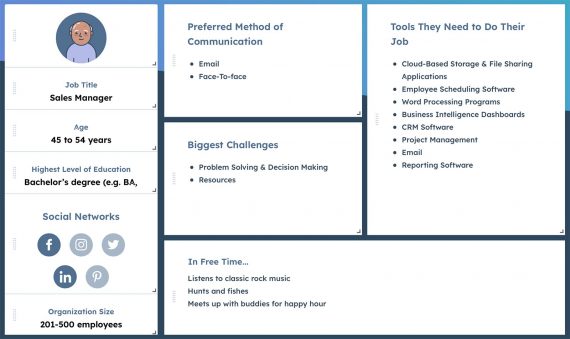Before building brands and products, you must define a target audience. This all-important process includes constructing personas — fictional customers representing your target market.
Market vs. Audience
A target market is a range of likely customers based on demographic, geographic, psychographic, and behavioral segments. For example, single moms aged 35-54. A target audience is more specific, such as single moms aged 35-54 who drink organic coffee.
The target audience should guide all on-site conversion efforts, including content, navigation, and calls-to-action. A brand’s voice encompasses more than words. Hence, not understanding potential buyers of your products is a sure way to miss out on sales.
But what if you aren’t sure? Or what if you’re targeting the wrong crowd?
Here are six steps to know your target audience.
Identifying a Target Audience
Segment existing customers
Analyze website and purchasing data to group customers by demographics and behaviors. How did they find your store? If from organic search, what keywords did they use? Study support tickets for common phrases. Read product reviews (on- and off-site).
Research the market
Know your competitors. What are the market gaps? Consider hiring expertise to cull the crucial info.
Analyze competitors
Study competitors from top to bottom. The analysis is essential. What are they doing right and wrong? Who are they targeting, and how? Which of their campaigns work? How much do they sell? Spy on your competitors to address shoppers’ needs.
Survey your buyers
Want to know what’s important to current customers? Ask! Simple surveys will tell quite a bit. Avoid asking a slew of invasive questions at once. Instead, deploy short surveys with one or two persona-identifying queries, such as “where do you live?” or “how many children do you have?” Consider hosting live “ask me anything” or “tell us your thoughts” sessions (video or audio) with a group of customers for real-time, honest feedback.
Review trends
Industry trends impact both competitors and customers. Some trends are recurring or seasonal. Others are short-lived and impactful. Look at the most compelling trends over the past two years and their effect on your business.
Interpret the data
Data from the above steps can reveal how people become loyal customers. Use a spreadsheet to crunch numbers and build crystal-clear personas in an easy-to-digest format.
HubSpot, for example, summarizes a hypothetical customer’s job title, age, education level, and more.

Buyer personas are data-rich, visual aids that represent specific details of the target audience. This template from HubSpot summarizes a hypothetical customer’s job title, age, education level, and more.
Shifting Audiences
Identifying a target audience is not a one-and-done process. Audiences shift.
An example is Duck Brand, which, as Melvin A. Anderson Company, produced tape to support military efforts during World War II. As usage shifted to commercial (heat and air ducts) and then to consumers, the brand followed, introducing colored tape in 1980 and patterns (camouflage) in 1997. Today the product is a staple in do-it-yourself projects and crafting.

DIY and crafting are the focus of Duck Brand.





